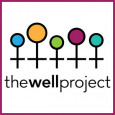This post originally appeared on and can be read in its entirety at The Well Project.
By Olivia G. Ford, Consulting Editor, The Well Project
When it comes to infant feeding, we often hear that “breast is best” for mothers who are able to breastfeed. In the setting of HIV, this recommendation holds true for women taking HIV drugs and their infants in resource-limited areas of the globe. This is because, in these areas, infants are more likely to develop, and even die from, diarrhea and other illnesses from which breastmilk can provide protection. Formula feeding also may not be an option in such areas due to lack of funds to purchase it, clean water to mix it with, or refrigeration to keep it fresh. Health authorities have determined that the benefits of breastfeeding outweigh the risks of HIV in areas where resources are constrained in this way.
However, in the U.S. and other high-resource countries, women living with HIV are told not to breastfeed their infants. Infant formula, clean water, and refrigeration tend to be readily available (although not always the case) in these countries, and the chance of a baby dying from illnesses like diarrhea is much lower. The guidelines are based on the belief that any risk of a baby getting HIV from breastmilk is not justified when parents can access alternatives. In part because of this recommendation, there is virtually no research on HIV and breastfeeding in high-resource settings. Further, guidelines around breastfeeding and HIV tend to exclude health and other considerations for breastfeeding parents, instead focusing largely on infant health and wellbeing.
In the era of Undetectable Equals Untransmittable (U=U) (the fact that a person cannot transmit HIV through sex when their viral load is too low to measure in their blood), more than ever, people are questioning whether these guidelines are still relevant. This is especially true considering that research from lower-resource settings shows extremely low risk of HIV transmission to babies when the breastfeeding parent is on effective HIV drugs.
How do current guidelines impact women’s lives and their decisions? What are some important considerations when thinking about this topic - and how might our thinking shift? And what do people living with HIV and their providers need in order for the field of infant-feeding options to expand?
At the 2019 U.S. Conference on AIDS meeting in Washington, DC, The Well Project conducted a session where people living with HIV, clinicians, social workers, case managers, and others gathered to discuss these very questions as part of Prevention Access Campaign’s U=U session track at the conference. Krista Martel, The Well Project’s executive director, moderated and contributed to a dynamic panel featuring Ciarra Covin, A Girl Like Me blogger and mom to a 9-year-old boy; Claire Gasamagera of the International Community of Women Living with HIV and a new parent to two young sons; and Marielle Gross, MD, an obstetrician/gynecologist and bioethicist at Johns Hopkins University.
In the safe, confidential space created in the session, audience members living with HIV and working in the field were able to share their own frustrating, painful, illuminating experiences with this topic. The group discussed everything from how best to engage providers to expand their thinking about breastfeeding in the setting of HIV, to potential beneficial uses for pumped breastmilk besides feeding (for instance, in a baby’s bathwater). Those in attendance also answered a brief, confidential survey to add to the base of evidence of community members’ perspectives and needs regarding infant feeding information. The majority of respondents to the survey identified research on transmission and education for providers to be their top priorities in this area. Further, most indicated that, when they were preparing to have a baby, if they had the information presented in the workshop and their care team supported them, they would have chosen to breastfeed. Continue reading...
The Well Project is a non-profit organization whose mission is to change the course of the HIV/AIDS pandemic through a unique and comprehensive focus on women and girls. Visit their website, www.thewellproject.org, to access fact sheets (English and Spanish), blogs, and advocacy tools, and to join a global community of women living with HIV.








Comments
Comments